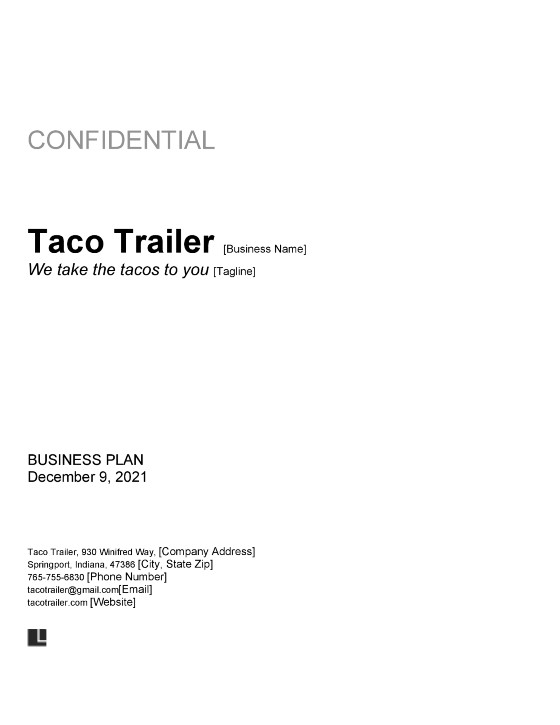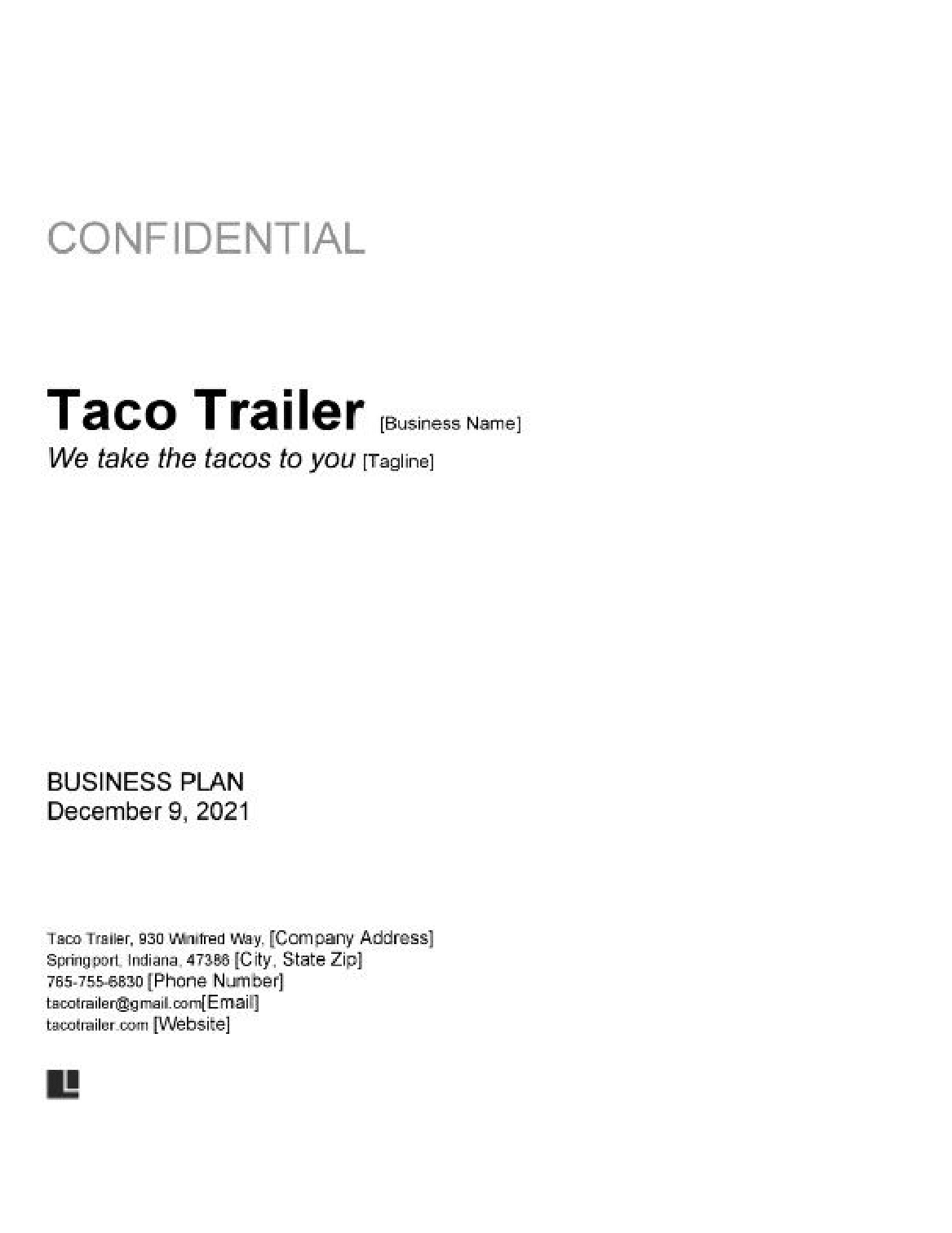Are you ready to start a food truck business? You will have many questions at this beginning stage, and a sample food truck business plan can help you find answers.
With the right food truck business plan, you will be better prepared to find investors and get your company on the road.
A food truck costs less to start up than a brick-and-mortar business, but it still requires capital to get going.
Once you know how to write a business plan for a food truck, you can seek the money you need to get started and outline a plan for success.
Why You Need a Business Plan for Your Food Truck Business
Many people think: “It’s a food truck; it’s simple. Why do I need a business plan?” A food truck requires planning, just like any other successful business. It would be best if you answered questions like:
- What food will you sell?
- Is there a demand for your product?
- Who will be your customers?
- Where will you travel?
- What are your startup and ongoing costs?
- What will your revenue look like?
A business plan sets the essential details you need for yourself and anyone looking to invest. Successful food truck businesses create a consistent schedule of where they will be and how they will communicate their location.
They know how they will buy their products and how much they will mark up to make a profit.
You must plan accordingly if you invest tens of thousands into a food truck. If you want others to support you, they need to know what they are getting into.
A food truck business plan lays out important details to attract the right kind of capital investors.

How to Write a Business Plan for a Food Truck
To develop your business plan, you must be prepared to cover critical topics and include the correct information.
If you use the template and complete each section correctly, you will have a well-formed business plan for you and potential investors.
1. Executive Summary
The first section of your food truck business plan should be the executive summary. This is an introduction and overview for whoever is reading the plan. It should make an excellent first impression and offer concise information without too much detail.
The executive summary highlights what your food truck business will look like and how it will be successful. It is considered by many to be the most crucial section of your business plan.
As for any startup business, you must build a solid case for the idea’s merit and why others should get financially involved. A typical executive summary includes sections such as:
- The target market for the food truck
- The business model
- Marketing and sales strategies
- Competition in the area
- A financial analysis
- Who the owners and staff will be
- An implementation plan
- What food will you offer, and why is it appealing
This section can contain a mission statement that describes your business values and philosophy. It should focus on concrete and achievable future goals for the company.
2. Management Team
Your business plan should include ownership information and details about the management team. A detailed outline of responsibilities sets the tone for how your food truck will run and makes expectations clear to everyone involved.
It also demonstrates to investors that you have considered how you will run your business effectively.
Ownership information should include the following:
- Full names of all owners
- The legal structure of the business (limited liability company, sole proprietorship, partnership, etc.)
- Percentage of ownership for each owner
- Types of ownership (partner interests, capital expenditure basis, stocks)
You also want to include information that fully outlines and profiles your management team. For each individual, this should have their
- Full legal name
- Position and summary of responsibilities
- Education and background
- Any relevant prior employment
- Past business success
- Food industry training or recognition
- Salary and benefits information
3. Products and Services
This is the section where you talk about the most essential part of your business — the food you will sell. Your business plan’s products and services section should include the full menu you plan to use at the opening.
If your full menu isn’t yet prepared, get it done to include it in the business plan. Including a fully designed menu shows you are ready to start your food truck immediately.
This section will also address:
- How will you order supplies
- Product costs and sale prices
- Why customers will eat your product over others
- How the product offerings will change over time
- How will you measure product sales success
Addressing each of these details is important to investors. It also provides guidelines to keep your good ideas practicable and achievable in a competitive food truck business market.
4. Customers and Marketing
Knowing who will buy your product is vital to a food truck business plan. This section will outline who will be interested in your food and why they will buy it. Are you focusing on a certain demographic, or is your food pleasing to many different types of customers?
You must outline this information and provide sufficient facts. One of the most common mistakes in business plans is to make statements without supporting evidence.
Your market research should be included here to show why you will have customers who will utilize your business.
Marketing is a key factor in the success of a food truck. How you advertise can make or break your brand recognition and ultimately affect your sales.
Your business plan should answer questions like:
- Will your truck contain brand advertising and logos?
- Will you have a social media presence? If so, what will it look like?
- Will you advertise on TV, radio, or other methods?
- Where will you go to sell your food? How will you let customers know where you will be?
This information is crucial and should be addressed in detail in this section. Be specific with your marketing strategies.
Vague information demonstrates that you have failed to clearly outline how you intend to advertise your food truck to the public.
5. SWOT Analysis
This section should address your business’s strengths, weaknesses, opportunities, and threats. The SWOT section is a framework used to evaluate how a company will compete in the market.
It analyses internal and external factors affecting your food truck’s success. It uses realistic and fact-based data, not your best hopes. This section should utilize actual data-driven market research.
The analysis should focus on why the product line will be successful against its competition. It should answer questions like:
- What is our competitive advantage?
- Where can we improve?
- What threats does our company face?
- What technology or other resources can we use to expand our market?
Answering these questions in detail provides key insights into how your food truck business will succeed despite any challenges.
With this information, investors can be assured their capital is wisely invested, and you are the right choice.
6. Financials
This section focuses on financial projections for the food truck company. It offers information about how your business will perform. Your financial information should address your break-even point and how you will exceed that amount.
The owners and investors must know how much money it will take to cover expenses, much less see a profit.
This section should also include:
- Financial projections based on mathematical models
- Monthly expenses for the business for supplies, employees, and more
- Price points for products
- Variable costs of goods, gasoline, truck maintenance, and more
- Projected revenue
This information should be backed up with complex data from your market research.
7. Operations
This section will outline the nitty-gritty operational details of your food truck business. It will include information related to products and services but will also outline crucial details like:
- Potential vending locations
- Business hours
- Business licensing and other legal requirements
- How many employees will you hire, what are their wages, and any benefits
- Food truck design
- Cooking and cleaning procedures
These crucial details show how you will get the job done each day. Every business owner understands it takes work — not just a great idea — to succeed.
Investors know this too, and will look for your business operations plans.
8. Appendix
The appendix is the place to include legal documents and other important information relevant to the rest of your business plan. Here you can provide the following:
- Copies of legal permits
- Photos of the product
- Customer reviews
- Market research on which your data was based
- Other relevant information
- Letters of reference
- Regulatory and Compliance Requirements
This section is meant to bolster the rest of your business plan and end on a positive note. Pictures of smiling people eating your food may leave a positive image for anyone who has read your business plan.
The appendix is flexible and meant to give you options.
Food Truck Business Plan Sample
Legal Templates can provide a free sample food truck business plan to help you get started. Whether you are just beginning the process or ready to look for investors, we can help.
Use a template builder to build your business plan step-by-step. See the food truck business plan sample below:

You can download a business plan in Word format here or start creating your food truck business plan using our document builder.
Explore more business plan guides below:


